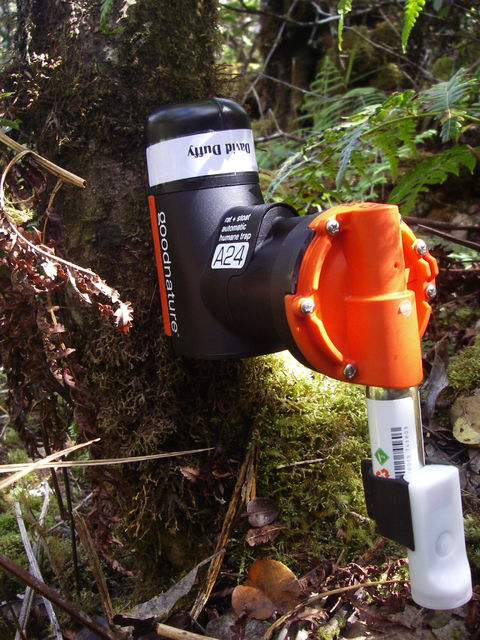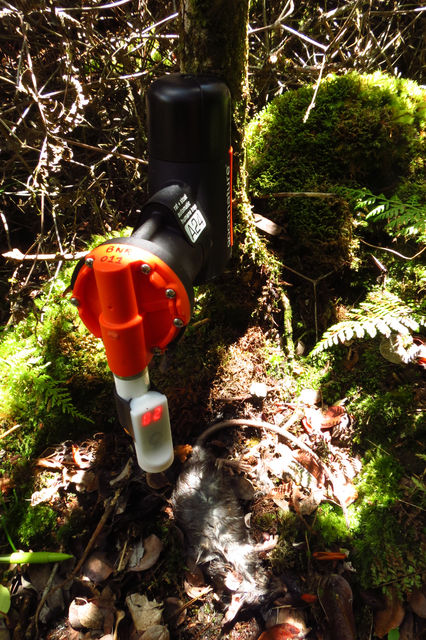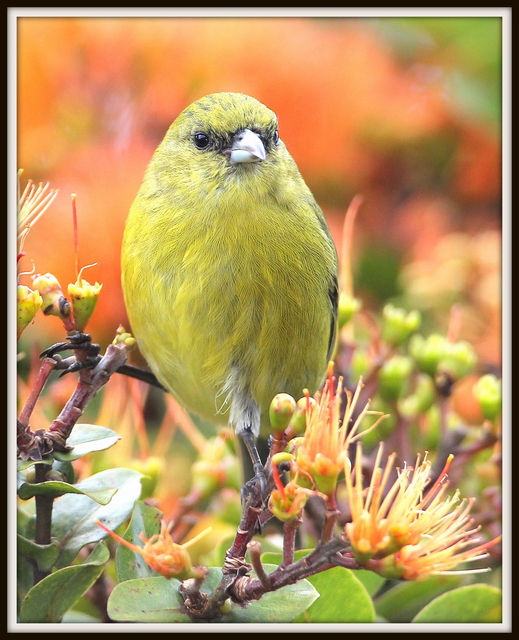HANAPEPE — You have less than 10 days to get a T-shirt that will help save Kauai’s endangered forest bird population. The Kauai Forest Birds Recovery Project’s #birdsnotrats campaign closes on April 30, which gives stragglers just a few days
HANAPEPE — You have less than 10 days to get a T-shirt that will help save Kauai’s endangered forest bird population.
The Kauai Forest Birds Recovery Project’s #birdsnotrats campaign closes on April 30, which gives stragglers just a few days to contribute toward buying rat traps and raising awareness about the endangered species.
According to Lisa “Cali” Crampton, project leader for the organization, the campaign began on Dec. 2, 2014 and continues through the crowdfunding website Indiegogo.
“We know that rat predation is a big deal for our forest birds and it’s something we’ve wanted to tackle for a long time,” Crampton said. “The campaign was a fortunate confluence of events.”
She said the organization’s traditional government-based funding sources had run dry in 2014, same time that a new type of rat trap emerged on the market.
“With traps you get at the hardware store, you have to check them weekly and these new traps only require that you check them every couple of months,” Crampton said.
That drastically reduces the amount of environmental impact associated with trap checking, especially in places like the Alakai Swamp, she said.
The third factor was a volunteer who donated their time to start the campaign.
“Those three things came together in the fall of 2014 and we started the campaign,” Crampton said.
So far the organization has raised enough money to place more than 100 traps throughout Kauai – a total of around $40,000.
“We had to hire another person just to put the traps out because the campaign was so successful,” Crampton said.
The way the campaign is set up, minimum donations of $40 get you a T-shirt and a bumper sticker. Donating $300 buys a trap, as well as a key chain, sticker and T-shirt. The package builds as you donate more money, and the highest tier is a $2,500 donation. That buys you a trip to the Alakai to watch the traps in action.
Crampton said they’re wrapping up the campaign now because it’s lost a little steam.
“It’s hard to maintain a campaign if there’s diminishing returns,” Crampton said.
The Kauai Forest Bird Recovery Project focuses on three endangered forest bird species on Kauai — the ‘Akeke’e, the “akikiki and the Puaiohi.
There are three other forest bird species found endemic to Kauai, and two are found throughout the Hawaiian Islands, but the organization concentrates on the three main, endangered populations.
“(Most of) the species except ‘Elepaio are declining in number and even those that aren’t, aren’t really increasing in population,” Crampton said. “We’re quite worried.”
For the Puaiohi, Kauai’s own little thrush species, Crampton said rats are the biggest threat. There are fewer than 500 individual songbirds left on Kauai.
“That population doesn’t seem to have declined over the last 10 or 15 years, but it doesn’t seem to have increased,” Crampton said.
She said the other two species have been in a “free fall” over the past decade and one of the biggest drivers of that species decline is avian malaria.
“Couple that with habitat loss and rat predation,” Crampton said. “Everything is a factor.”
She said avian malaria was established in the 1950s on Kauai, and was easily spread by the mosquito population – which had been introduced to the island in the 1800s.
“It slowly spread around Kauai and it’s always ongoing transmission at sea level, where the temperatures are warm enough for mosquitoes to breed and the malaria to compete its cycle,” Crampton said.
In higher elevations, like the Alakai Swamp area, there’s a transmission season that usually runs from August to September.
“It’s expanding, so now it kind of seeps into the months on either side of that,” Crampton said.
For more information on the #birdsnotrats campaign, visit kauaiforestbirds.org.




